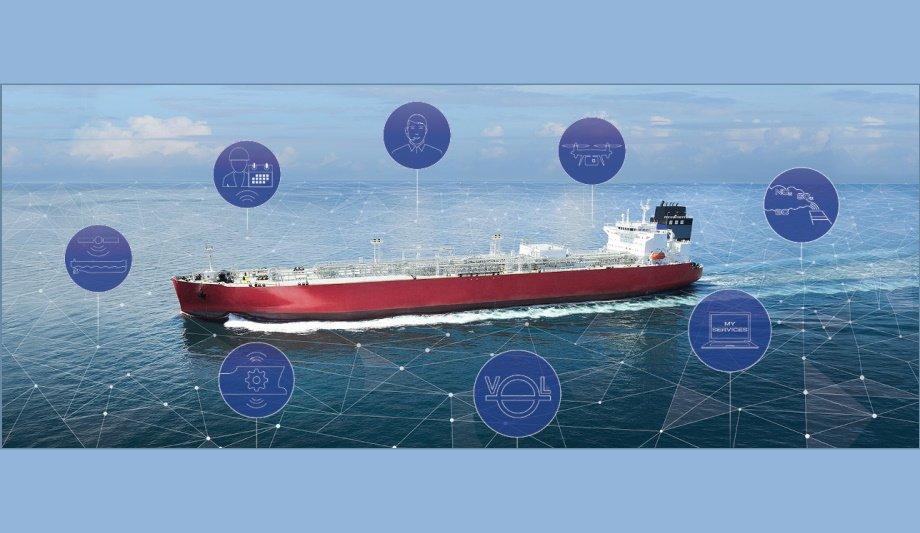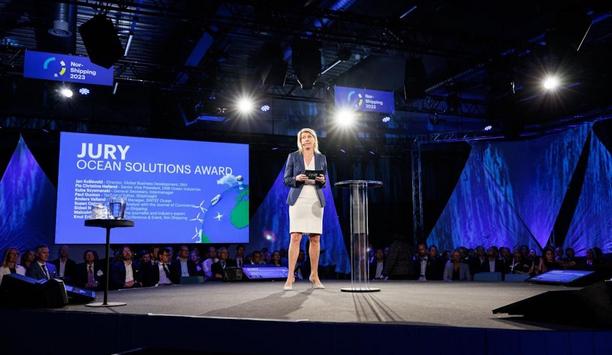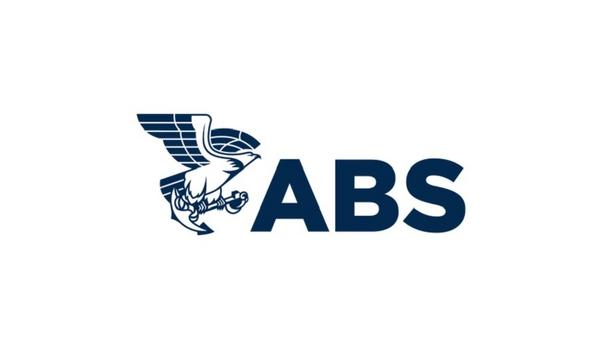The maritime industry is undergoing a massive shift, as vessels transform into sophisticated sensor hubs, generating data and connecting through satellites in an expanding interconnected web.
To enable the uptake of these systems and unlock the associated efficiencies, DNV GL is launching a new chapter to its world leading rules for ship classification: Digital Features.
New chapter of Digital Features
Vessels, their systems and components are now increasingly linked to the internet
The new chapter was launched with three new notations (D-INF, DDV, REW) on 28 October, 2020 and will enter into force on January 1st 2021. In addition, a new Smart vessel notation (Smart) - a framework for assessing and visualising digital vessel features - was introduced.
Vessels, their systems and components are now increasingly linked to the internet, making them accessible from anywhere and part of a network of online maritime assets. This is giving the industry access to real-time data, enabling increased automation, decision support, remote monitoring, and overall boosts to safety and performance.
Data collected in cloud used as basis for digital twins
At the same time this data – collected in cloud storage and used as the basis for digital twins and other operational, design and construction simulations – is having a dramatic effect on the way the industry looks at information, while opening up new business models and risks.
“The COVID-19 pandemic has triggered a renaissance in the maritime industry, as we see greater and deeper adoption of digital solutions to enhance safety, sustainability and efficiency,” said Knut Ørbeck-Nilssen, CEO of DNV GL – Maritime.
Clear class foundation for maritime digitalisation
He adds, “The key to maximising the potential of these digital technologies and strategies is to enable companies to more easily build trust in them. With the new Digital Features chapter, we have laid a clear class foundation for three of the most essential building blocks of maritime digitalisation.”
The Digital Features chapter (Pt.6 Ch.11) is supported by two new DNV GL class guidelines
The Digital Features chapter (Pt.6 Ch.11) is supported by two new DNV GL class guidelines and sets out the basic features of a smart vessel and how new digital solutions can be implemented to unlock new efficiencies and opportunities.
The three initial notations to be offered are: Data collection infrastructure - “D-INF”; Data-driven verification - “DDV”; and Remote witnessing preparedness /network and connectivity - “REW”.
Class notation “D-INF”
The class notation “D-INF” - Data collection infrastructure and vessel connectivity sets out the requirements for the complete data collection infrastructure, including an onboard data server, a data relay component and remote data server, as well as the connection to shore. This applies to onboard equipment delivered by both the yard and the owner when applied for class purposes.
Data-driven verification principles for remote surveys - “DDV”
Data-driven verification principles for remote surveys - “DDV”, sets the requirements for the gathering, treatment and delivery of collected data to ensure the quality of this data for use in a class assessment.
This means that for the specified systems, the verified data can be used in the certification and classification of those systems in maritime and offshore vessels. The notation covers several different verification methods, including self-verifying systems and digital twins.
Remote witnessing preparedness on network - “REW”
Remote witnessing preparedness on network and connectivity - “REW”, provides the requirements for systems and solutions used in remote witnessing. To enable remote interaction with technical experts the notation outlines the onboard arrangements for live streaming throughout the vessel.
Two qualifiers indicate functionality for real time witnessing, remote test functions and sharing of system display information (HMI), with or without remote control of the system enabled.
“Smart vessel” (Pt.6 Ch.5 Sec.24) is a voluntary notation
Digital Features and Smart are exciting next steps in our classification journey because they enable owners"
Finally, “Smart vessel” (Pt.6 Ch.5 Sec.24) is a voluntary notation that provides a framework for assessing and visualising digital vessel features. The three qualifiers (OPM, OPH and EEN) demonstrate a vessel is utilising enhancements that improve operations, efficiency, and reduce environmental impacts.
Knut Ørbeck-Nilssen said, “Digital Features and Smart are exciting next steps in our classification journey because they enable owners, operators and yards to qualify and demonstrate their latest technologies.”
New rules and notations
He adds, “Right across the industry we are seeing a wave of innovation that is propelling the industry forward. These new rules and notations give our customers the perfect platform for demonstrating cutting edge technologies and unlocking the value they bring to the market.”
The new chapters and 4 class notations were launched on October 28th 2020 and will enter into force on January 1st 2021.











